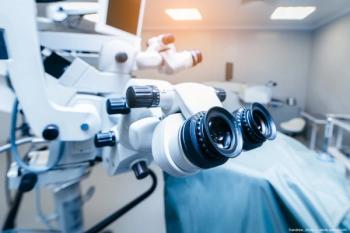
Glaucoma 2006 offers tools for the practicing ophthalmologist
The theoretical benefits of laser iridotomy are that it can relieve reverse pupillary block, alter iris configuration, reduce pigment release, and improve long-term IOP control.
New York-Glaucoma 2006, an educational symposium in its sixth year, offered ophthalmologists a virtually uninterrupted 5-hour series of updates and panel discussions on every aspect of glaucoma, from analyses of well-established knowledge to previews of just-emerging technologies.
Robert D. Fechtner, MD, professor of ophthalmology at University of Medicine & Dentistry of New Jersey (UMDNJ)-New Jersey Medical School, Newark and one of the chairmen of the program, set the tone of the Glaucoma 2006 meeting when he said its purpose was "to make us a little better as glaucoma doctors."
The next topic focused on the measuring of IOP. The old rules have been changed by the finding that IOP appears to peak at night, according to Robert N. Weinreb, MD. At the sleep laboratory at University of California, San Diego (UCSD), he and his colleagues found that 67% of peak IOP appears to occur after ordinary office hours, making nighttime measurements advisable. And tests of IOP are not as clear-cut a diagnostic tool as once assumed, he said, since it may be necessary to adjust for such factors at central corneal thickness. "In 2006, measurement of IOP is under pressure," said Dr. Weinreb, professor of ophthalmology and director of the Hamilton Glaucoma Center, UCSD.
Determining risk
A first step toward such a risk calculator was described by Dr. Weinreb. Intended for patients with ocular hypertension, S.T.A.R. (Scoring Tool for Assessing Risk) enables physicians to estimate the risk of ocular hypertension progressing to glaucoma within 5 years. Risk factors include age, baseline IOP, corneal thickness, visual field pattern standard deviation, the presence or absence of diabetes, and vertical cup/disc ratio. This easily used S.T.A.R device is available from Pfizer Ophthalmics.
Newsletter
Don’t miss out—get Ophthalmology Times updates on the latest clinical advancements and expert interviews, straight to your inbox.


















































.png)


